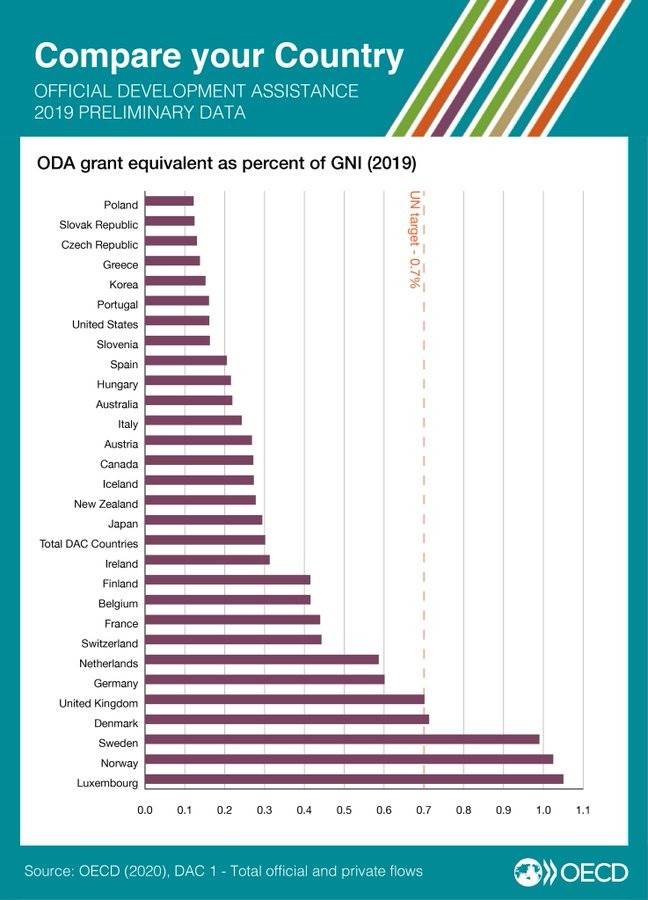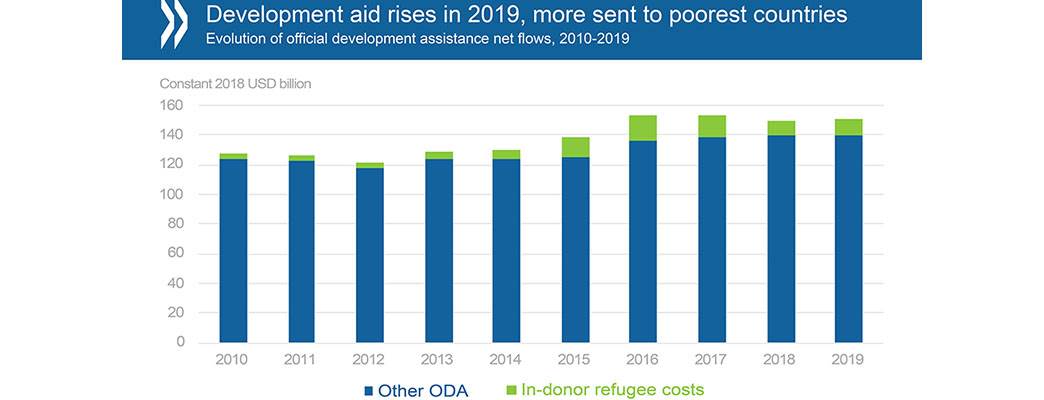“The global corona crisis is creating an even greater need for assistance. Developing countries are facing enormous challenges today. The social and economic consequences of corona can be extremely challenging for developing countries. Therefore, it is important that Norway increases aid measures, and I am pleased that we achieved the Government’s target of 1 per cent of GNP in 2019,” says Minister of International Development Dag-Inge Ulstein.

Figures being presented today from the Organisation for Economic Cooperation and Development (OECD) show that Norway gave 37.8 billion kroner in aid in 2019, which amounts to 1.02 per cent of the gross national product (GNP). This is an increase from the previous year, when Norway’s aid was just under 1 per cent.
“Humanitarian efforts in refugee camps and directed at other people in vulnerable situations are particularly important as a consequence of the corona pandemic. Norway continues to ramp up humanitarian aid, both through competent Norwegian aid organisations, and through the UN and other global channels,” says Minister of Foreign Affairs Ine Eriksen Søreide.
“I am extremely pleased to see such broad-based support for Norwegian development aid, both in the Norwegian Parliament (the Storting) and among the Norwegian people. This is why we can succeed in scaling up our work for poor citizens of the world, for those who have been affected by war and conflict, or who are fleeing desperate situations,” says Minister of International Development Dag-Inge Ulstein.
The OECD highlights Norway as one of the countries with the greatest increase in development aid. Norwegian development aid increased by 9.7% from 2018 to 2019, adjusted for inflation and currency fluctuations. This increase can be explained by the earmarked aid, particularly earmarked aid through multilateral channels. Other countries that also saw an increase in 2019 include Finland, Hungary, South-Korea and Greece.
Norway is one of few donor nations that achieve the UN target of 0.7 per cent of GNP to ODA (Official Development Assistance, pursuant to the OECD’s definition). Five DAC countries achieved this target in 2019, including Norway. The other countries were Sweden, Denmark, the UK and Luxemburg. Norway has achieved this UN target since 1976.
“The world has made a commitment to achieve the Sustainable Development Goals by 2030. Wealthy nations have a special responsibility to include developing countries in achieving these goals. The corona crisis reinforces this commitment. We won’t be able to achieve the Sustainable Development Goals if we do not raise the standard of living for the very poorest, the most vulnerable, and not without ensuring education for more of the population, helping more people to achieve better health, and if we do not contribute to reduce destructive climate change and assist poorer countries in developing their economies,” says Ulstein.
In terms of billions of dollars, the US was the donor nation that provided most assistance in 2019, followed by Germany, the UK, Japan and France. However, in terms of absolute figures, the UK stands alone among the largest donor nations in achieving the goal of giving 0.7 per cent of GNP.
Refugee expenses in Norway accounted for 1.4% (NOK 524.8 million) of the total aid in 2019. This is a decline from 2.4% in 2018. If we disregard refugee expenses in Norway, Norwegian aid rose by 10.8% from 2018 to 2019, adjusted for inflation and currency fluctuations.
